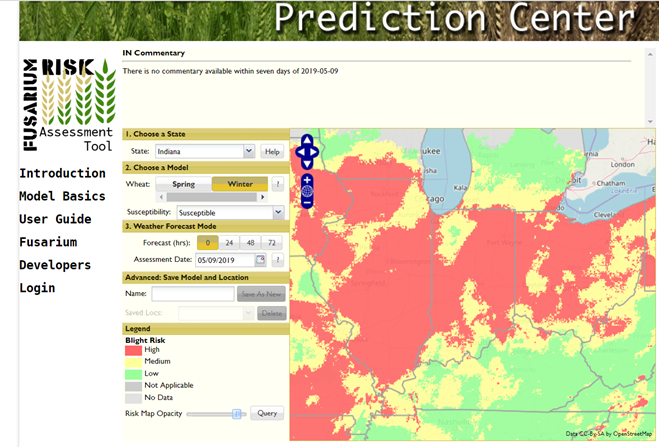I have heard that wheat is starting to flower in parts of southern Indiana, and the Fusarium risk forecast is still red for most of the state indicating a high-risk potential for infection. Recent weather conditions will only continue to promote the high risk. (Fig. 1 Fusarium Risk Assessment Tool)
During flowering, moderate temperatures of 56 to 86° F and high relative humidity favor head scab (Fusarium head blight). The best time to make a fungicide application is when 50% of heads are starting to flower – watch for anthers (flowers) emerging from the wheat heads to make this determination. The best control, with all fungicides, will occur when applications are made at this time. Caramba and Prosaro (FRAC group 3) or Miravis Ace (FRAC group 3 + 7) give good control of scab as well as most leaf and head diseases. These products will help reduce the disease severity and associated mycotoxin level (DON or vomitoxin). It will generally take 2.5 to 3 weeks for symptoms of Fusarium head blight to appear after initial infection.
For more details see last week’s article in Pest & Crop, and fungicide efficacy for wheat diseases in CPN publication Small Grain Disease Management.



